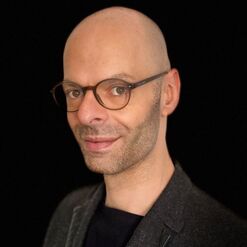Dr. MATTEO PANERAI
|
Dr. Panerai earned the European Certification in Psychology n. 258, in addition to being a member of National Psychologist Board n. 5103.
After a period of Training in the United States at the MRI and the Family Therapy Institute in California, Dr. Panerai earned a specialization in Brief Strategic Therapy at the BST Center directed by Prof. Giorgio Nardone. Through this approach it is possible to find the solution to a problem, in a short time, with effective and targeted strategies. With the aforementioned strategies, it will be gradually possible to experiment new functional lifestyles.
Additionally Dr. Panerai trained at the EMDR Institute in Watsonville California directed by Prof. Francine Shapiro Ph.d, who founded and developed this approach, where he gained experience with EMDR "eye movement desensitization and reprocessing" method.
Dr. Panerai deals with the most important forms of psychological pathologies and problems about couple and family relationships.
After a period of Training in the United States at the MRI and the Family Therapy Institute in California, Dr. Panerai earned a specialization in Brief Strategic Therapy at the BST Center directed by Prof. Giorgio Nardone. Through this approach it is possible to find the solution to a problem, in a short time, with effective and targeted strategies. With the aforementioned strategies, it will be gradually possible to experiment new functional lifestyles.
Additionally Dr. Panerai trained at the EMDR Institute in Watsonville California directed by Prof. Francine Shapiro Ph.d, who founded and developed this approach, where he gained experience with EMDR "eye movement desensitization and reprocessing" method.
Dr. Panerai deals with the most important forms of psychological pathologies and problems about couple and family relationships.
U.S. TRAINING
Family Therapy Institute, San Diego, California
MRI Mental Research Institute, Palo Alto, California
EMDR Institute, Watsonville, California
Family Therapy Institute, San Diego, California
MRI Mental Research Institute, Palo Alto, California
EMDR Institute, Watsonville, California
APPROACH
The fundamental concept upon which the brief Strategic Therapy approach is based is the conviction that psychic disorders are generated starting from a series of maladaptive perceptive, emotional and cognitive modalities assumed by an individual with respect to reality, thereby facilitating the emergence of dysfunctional reactions and behaviour, which, instead of solving, perpetuate the problem from which he/she is suffering.
The chief aim of Brief Strategic Therapy is the short-circuiting of the particular vicious circle created between the manifestation of the disorder and the maladaptive behaviour presented by a person in an attempt to solve it, but which nevertheless ends up by reinforcing and aggravating the problem. The method has a structure featuring 3 separate phases:
• Examination of the specific characteristics of a problem.
• The identification of already attempted solutions.
• Replacing the dysfunctional solutions, which, instead of solving the problem, tend to reinforce it, with others, which, on an experimental basis, have been shown to be effective in achieving the desired results.
Fundamentally, the ‘strategic’ method aims at modifying a patient’s perception of reality. This result can be attained through a restructuring of the patient’s evidently dysfunctional manner of perceiving the world and reacting in relation to reality. The restructuring of the subject’s outlook already begins during the first sessions of therapy, in which the person learns to access resources he or she already possessed but was incapable of exploiting, and thereby creating a new way of seeing and perceiving the situations which until a short time before had represented a problem.
The chief aim of Brief Strategic Therapy is the short-circuiting of the particular vicious circle created between the manifestation of the disorder and the maladaptive behaviour presented by a person in an attempt to solve it, but which nevertheless ends up by reinforcing and aggravating the problem. The method has a structure featuring 3 separate phases:
• Examination of the specific characteristics of a problem.
• The identification of already attempted solutions.
• Replacing the dysfunctional solutions, which, instead of solving the problem, tend to reinforce it, with others, which, on an experimental basis, have been shown to be effective in achieving the desired results.
Fundamentally, the ‘strategic’ method aims at modifying a patient’s perception of reality. This result can be attained through a restructuring of the patient’s evidently dysfunctional manner of perceiving the world and reacting in relation to reality. The restructuring of the subject’s outlook already begins during the first sessions of therapy, in which the person learns to access resources he or she already possessed but was incapable of exploiting, and thereby creating a new way of seeing and perceiving the situations which until a short time before had represented a problem.


